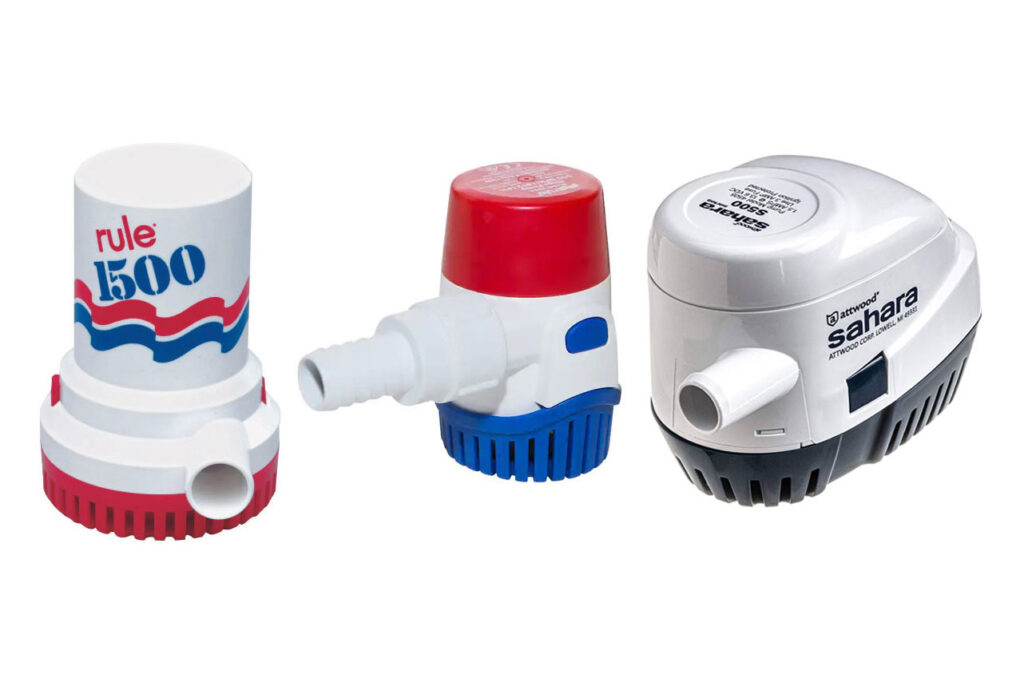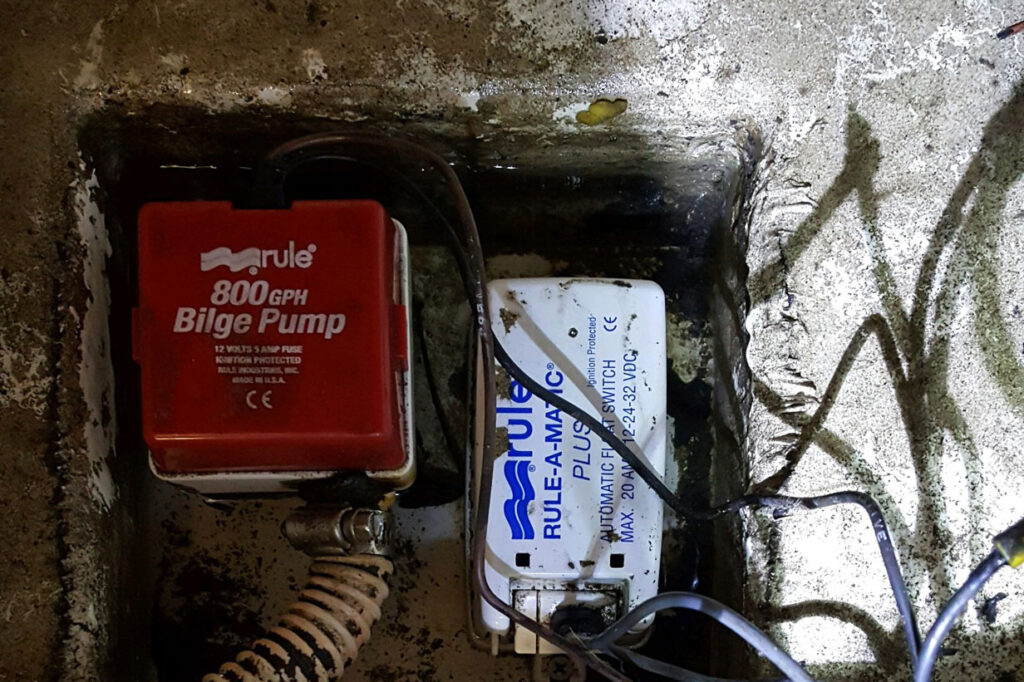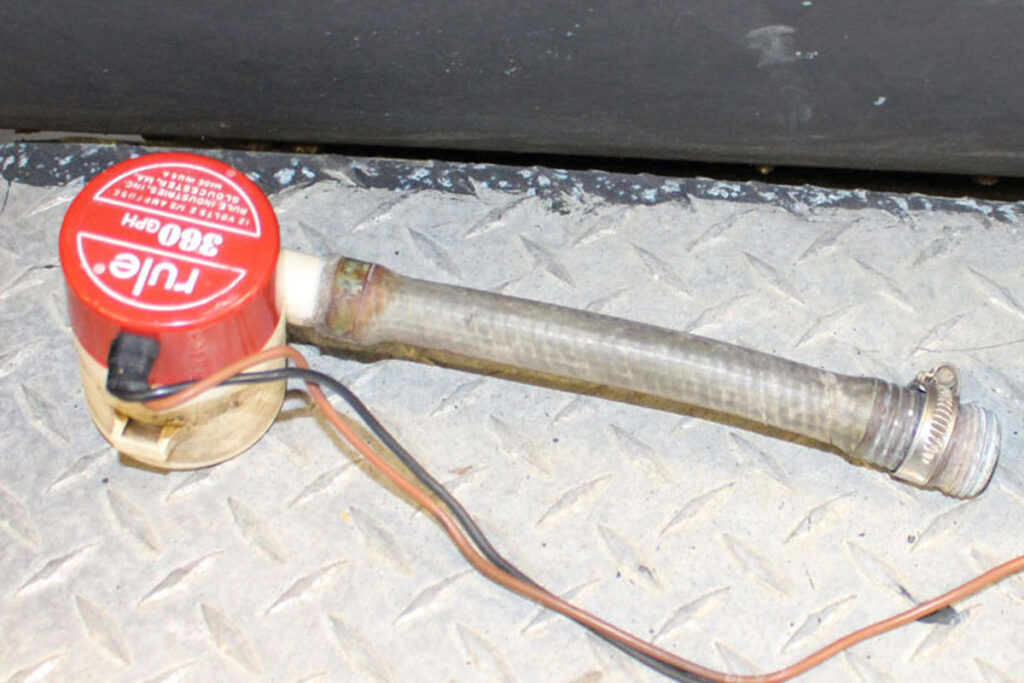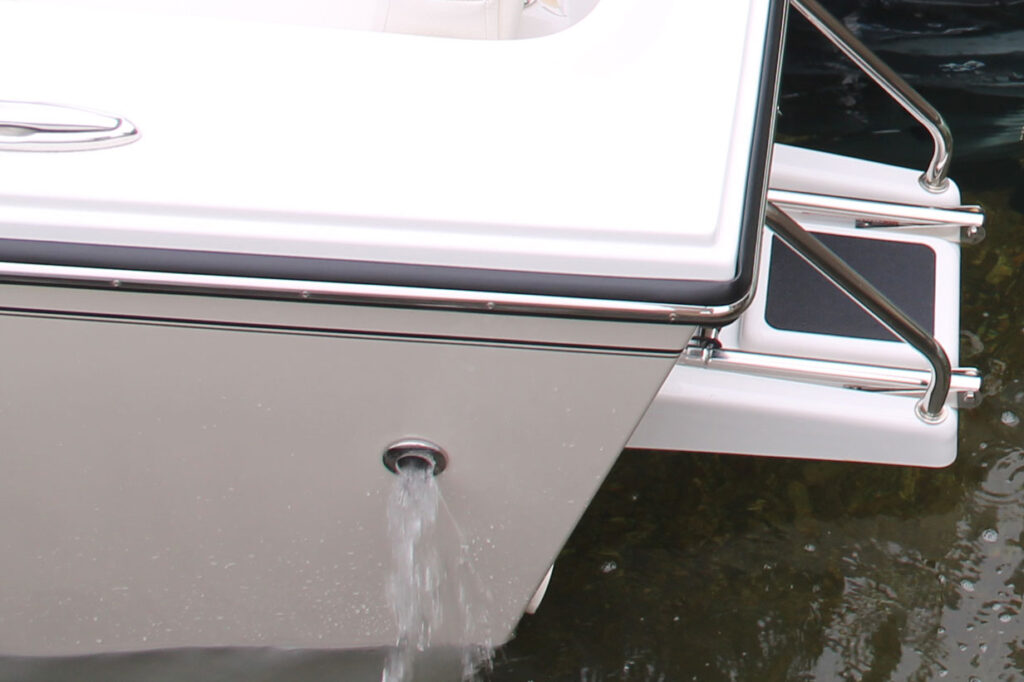How to Fix or Replace a Bilge Pump
 The majority of today’s pumps are affixed to the strainer basket via plastic tabs and clips, so it’s easy to swap out an old pump cartridge for a new one using the existing strainer already mounted in place.
Courtesy Lenny Rudow
The majority of today’s pumps are affixed to the strainer basket via plastic tabs and clips, so it’s easy to swap out an old pump cartridge for a new one using the existing strainer already mounted in place.
Courtesy Lenny Rudow
Your boat almost certainly needs a working bilge pump to stay afloat, so calling this accessory “important” is a significant understatement. And as anyone who’s owned a boat knows, bilge pumps can, and do, fail. They might get clogged, they may suck in grit or bits that jam or damage the impeller, and they can suffer from electrical issues too. In fact, it’s a question of when, not if, a bilge pump or repair will be needed. Which procedure is necessary will depend on the nature of the problem.
How to Fix a Bilge PumpThe best way to fix a bilge pump is to preempt problems with preventive maintenance.
When it comes to bilge-pump wiring, this is a matter of performing regular visual inspections to make sure all wires, connections and switches are in good condition. Like virtually every other problem that could arise, it boils down to keeping a clean bilge. When a bilge pump needs repairs, the culprit is often a foreign object being sucked up into it. IF the pump ingests grit, pebbles, fiberglass shards, fish scales or bones, and just about any other relatively hard object, it can cause the impeller to become stuck or damaged. Sure, the pump has a strainer to keep foreign objects out, but thin or small items can work their way through.
Even softer items like seaweed or cloth can be problematic if they get pulled up against the strainer and restrict water flow. That pump is designed to run with water moving through it, and if it spins for too long without any it can burn up. And fishing line, especially braid, is an epic pump-killer in a class of its own. It can get sucked right through the strainer, wind around the impeller shaft, and cause it to lock up. If the pump continues running it won’t be long before a complete failure occurs.
 Preventive maintenance is key; you can tell this bilge is an old one, but notice how there’s no detritus or grit in the bilge.
Courtesy Lenny Rudow
Preventive maintenance is key; you can tell this bilge is an old one, but notice how there’s no detritus or grit in the bilge.
Courtesy Lenny Rudow
Simply keeping your bilge clean can prevent this issue. Remember, even on many self-bailing boats, things can get washed into the bilge via a deck-hatch gutter or some other point of entry. So constantly pay attention to the bilge and keep it clean as a whistle.
If the bilge pump stops working and you’ve eliminated wiring as the culprit, what’s next? It’s almost certainly a clog or a jam. In the case of a clog, clean around the strainer basket. If the clog is in the outflow, try removing the hose from the pump and blasting it out with a washdown or garden hose. Clogs in the outflow usually result from a critter crawling or flying into the fitting in the hull side and building a nest. A strong blast will be oftentimes enough to resolve the issue.
In the case of a jam, pull the pump out and remove the offending item. Most modern bilge pumps connect to the strainer basket via plastic clips, which can be squeezed together to release the pump cartridge. Then turn it upside down to get a look at the impeller. Clean out any foreign objects and replace the cartridge into the basket. If it still isn’t working, a replacement is probably in order because the cartridge itself is sealed and isn’t intended to be disassembled for repairs.
 When possible, use the same outflow hose, or at least one of the same diameter.
Courtesy Lenny Rudow
How to Replace a Bilge Pump
When possible, use the same outflow hose, or at least one of the same diameter.
Courtesy Lenny Rudow
How to Replace a Bilge Pump
Since most modern bilge pumps connect to the strainer basket via those plastic clips, boaters can usually purchase an identical pump and simply swap the old cartridge out for a new one. All that’s needed is to remove the outflow hose, change the wiring connections, and replace the outflow hose on the new cartridge. You shouldn’t need to drill any holes or turn any screws.
If the pump has to be replaced with a different model or the existing one is of an unusual type, on the other hand, you may need to remove it completely and mount the new one in place. This can range from screwing it down onto a dedicated mounting platform to bolting it to an L-bracket on a stringer or the transom. In any case, the best practice is always to mount the new pump exactly where and how the original one was mounted. Similarly, if at all possible use the same outflow hose or at least a new outflow hose of the same diameter (to be sure it fits the barb on the through-hull properly), routed in the same manner as the original. The bottom line is that the boat was designed to have that pump mounted in a specific way in a specific place and altering it is generally not a good move; otherwise you may find that more water collects in the bilge before being pumped out, the pump doesn’t pick up water properly, or it doesn’t evacuate it at the same rate.
 Nothing is more important than having a functioning bilge pump.
Courtesy Lenny Rudow
Nothing is more important than having a functioning bilge pump.
Courtesy Lenny Rudow
Remember that any wiring connections that need to be made belowdecks will be subject to constant moisture, and they need to be protected by heat-shrink tubing and loomed or supported in the same way the old wires were. If drilling any new holes is necessary they should be sealed with a waterproof adhesive/sealant like 3M 5200.
No matter the type or size boat, few accessories aboard are as important as the bilge pump. Make sure it keeps pumping and if fixing a bilge pump doesn’t seem to be going well, just replace it. The alternative—a sinking boat—is something no boat owner should ever risk.
The post How to Fix or Replace a Bilge Pump appeared first on Yachting.
- Home
- About Us
- Write For Us / Submit Content
- Advertising And Affiliates
- Feeds And Syndication
- Contact Us
- Login
- Privacy
All Rights Reserved. Copyright , Central Coast Communications, Inc.